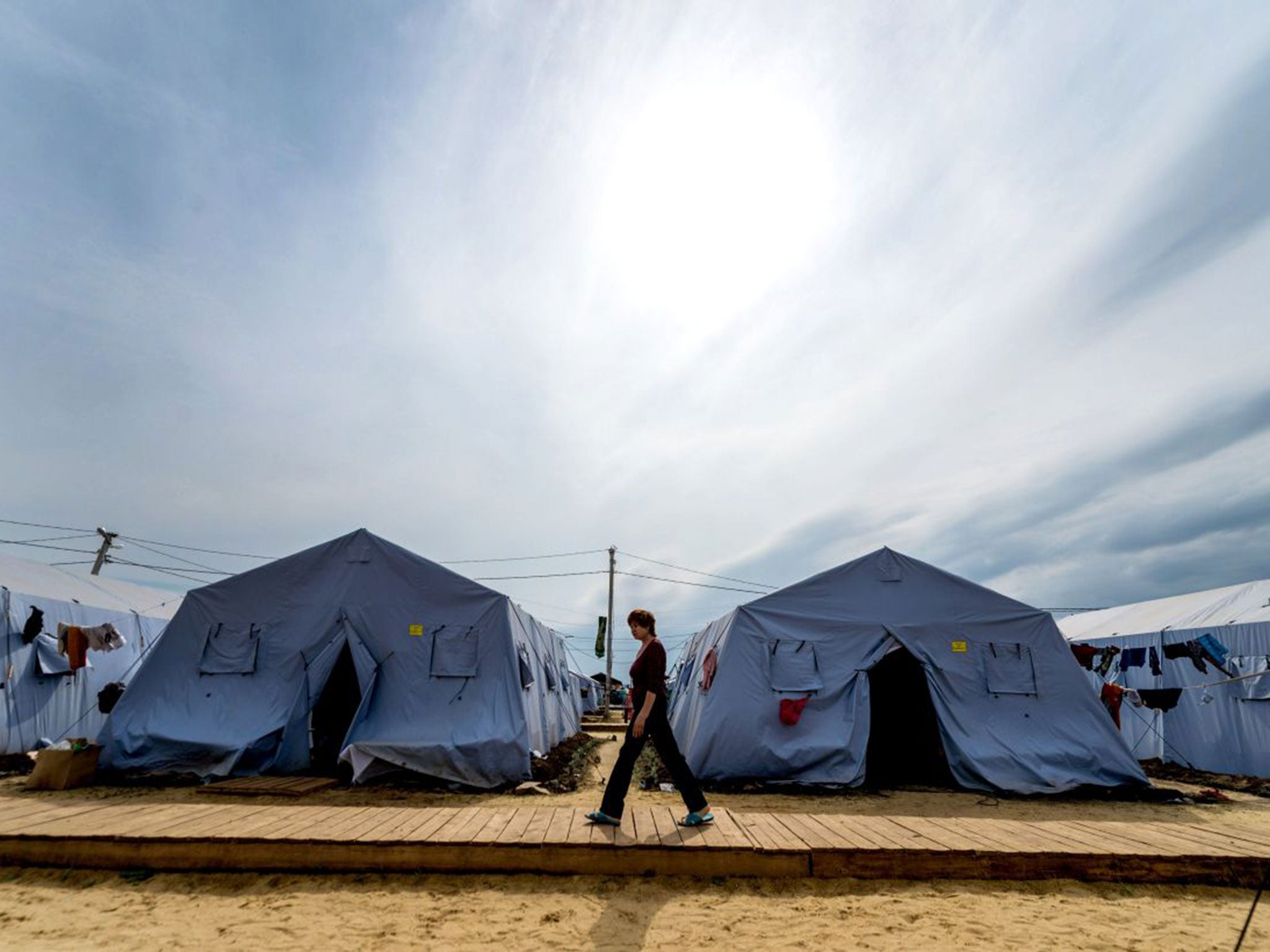Ukraine crisis: Dozens of civilians ‘killed by rebel shelling’ in east
Barrage took place on road to rebel-held Luhansk, with women and children among the victims according to Ukrainian military

Your support helps us to tell the story
From reproductive rights to climate change to Big Tech, The Independent is on the ground when the story is developing. Whether it's investigating the financials of Elon Musk's pro-Trump PAC or producing our latest documentary, 'The A Word', which shines a light on the American women fighting for reproductive rights, we know how important it is to parse out the facts from the messaging.
At such a critical moment in US history, we need reporters on the ground. Your donation allows us to keep sending journalists to speak to both sides of the story.
The Independent is trusted by Americans across the entire political spectrum. And unlike many other quality news outlets, we choose not to lock Americans out of our reporting and analysis with paywalls. We believe quality journalism should be available to everyone, paid for by those who can afford it.
Your support makes all the difference.“Dozens” of civilians were killed in a rebel shelling attack on Monday on a convoy of refugees trying to flee war-torn eastern Ukraine, a top Ukrainian defence official said.
Col Andriy Lysenko, a spokesman for Ukraine’s National Security Council, told reporters he did not have an exact figure but said dozens of people have died, including children. The separatist rebels fighting the Ukrainian government had no immediate comment on his statement.
The barrage took place between the towns of Khryashchuvate and Novosvitlivka, which lie on the main road leading to Russia from the besieged rebel-held city of Luhansk, he said.
“Many people were killed, among them women and children,” Col Lysenko said. “We are not able to count the death toll at this point.” When asked about a rough estimate of deaths, he said, “Dozens”.
That road is likely to be the one that a disputed Russian aid convoy would take if Ukraine allows it into the country, heading for Luhansk.
Fighting across eastern Ukraine has forced nearly 344,000 people to flee their homes, according to UN figures released on Friday. The UN says about 155,800 have left for other places inside Ukraine while 188,000 more have crossed into Russia.
The flow of refugees only seems to be growing. The UN Office for the Co-ordination of Humanitarian Affairs said more than 22,000 people fled the main rebel-held city of Donetsk last week compared to 6,200 the week before.
City officials have released even higher numbers. At least 300,000 of Donetsk’s pre-war population of one million have left their homes, while Luhansk has only 250,000 of its 420,000 people left, local authorities say.
Residents in Luhansk have had no running water, power or phone connections for 16 days. Basic foods are in short supply, leading to long lines outside shops, city hall said yesterday, adding that fighting continues in and around the city.
The International Committee of the Red Cross, which is expected to take responsibility for the Russian aid convoy when it enters Ukraine, has demanded security guarantees from all sides, including the rebels, for the mission into eastern Ukraine. There was no indication that the guarantees had been given.
The humanitarian aid convoy of over 200 trucks from Russia has been watched with suspicion by Ukraine and the West, especially since Ukrainian forces have been winning back significant territory from the rebels in the last few weeks. They suggest it could be used by Russia to send help to the separatists – or to delay the government’s advances with a timely ceasefire.
Russia’s Foreign Minister, meanwhile, said he expects the Russian humanitarian aid mission to enter Ukraine in the near future.
Speaking yesterday at a news conference in Berlin, where he met a day earlier with his counterparts from Ukraine, France and Germany, the Russian Foreign Minister Sergei Lavrov said all questions regarding the mission had been answered and that an agreement had been reached with Ukraine and the ICRC.
It was not clear if Mr Lavrov was referring to the security guarantees. The fighting in eastern Ukraine began in mid-April, a month after Russia annexed Ukraine’s southern peninsula of Crimea.
AP
Join our commenting forum
Join thought-provoking conversations, follow other Independent readers and see their replies
Comments